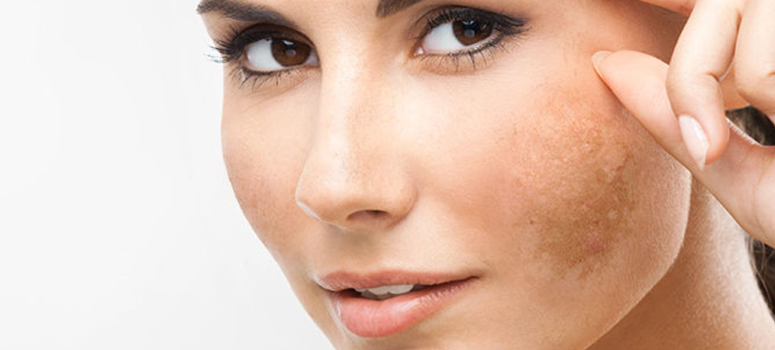Most of us spend a good chunk of our day outdoors. And no matter how hard you try, avoiding the sun while being outdoors is next to impossible. Apart from just covering yourself and following others skin care tips, taking the right precautionary measures is also essential, especially when staying indoors is not an option.
You might have already observed, that the first signs of sun damage can be seen with hyper and hypopigmentation, and dark spots. The sun rays directly target your skin and cause skin discolouration due to uneven distribution of melanin. While sun exposure and its UV rays can cause even tanning or sunburn, the exposed skin needs to deal with further risks caused by excessive exposure to the sun which include premature ageing and most acute of all – skin cancer. So, before learning about skin pigmentation and treatment for its removal, let’s first understand – what is pigmentation?
Skin pigmentation essentially is the colour of your skin. When your skin is healthy and devoid of any sun damage, your skin colour will appear to be normal. In the case of sun damage or excessive exposure to harmful sun rays, your skin may change colour. When it becomes darker it is called hyperpigmentation and when it turns lighter it is called hypopigmentation. The different types of pigmentation are categorised either under hyperpigmentation or hypopigmentation depending on the effect it has on your skin.
How it affects an individual?
The changes in the pigment of your skin, i.e. melanin cause different types of skin discolouration and therefore do not respond to the same treatment. Sunspots, age spots, freckles, or just normal skin pigmentation, irregular skin discolouration is a common skin problem and is caused by many factors such as:
- sun damage
- inflammatory skin disorders
- hormonal fluctuations
It is therefore essential to get the correct diagnosis of the type of pigmentation you are experiencing if the treatment has to work.
The causes of these different types of skin discolouration are:
- skin pigmentation disorders
- skin infections
- skin rashes
- skin cancers
- birthmarks
- medical conditions
Since there are plenty of causes for uneven skin pigmentation, let’s take a look at the different types of skin pigmentation so you can understand your skin better.
Types of Skin Pigmentation
If you notice either lighter or darker patches on your skin, it signifies a skin pigmentation disorder. There are different types of skin pigmentation disorders which include:
1. Melasma
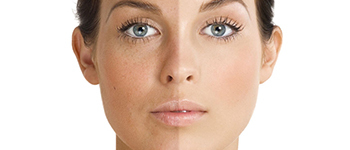
2. Vitiligo
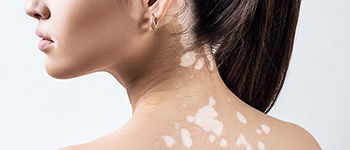
3. Post-inflammatory Hyperpigmentation/Hypopigmentation
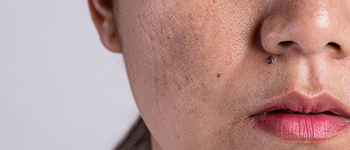
4. Albinism
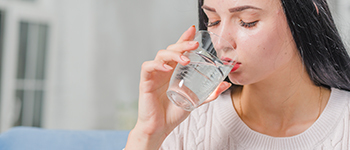
Treatment for Skin Discolouration or Pigmentation
The treatment for skin discolouration depends on the diagnosis. Depending on whether a person has an underlying medical condition, the skin doctor or dermatologist will recommend the best course of treatment. Many times, treating the underlying medical condition resolves any associated skin conditions.
However, if the underlying cause of skin discolouration is skin cancer, it is of utmost importance that treatment begins at the earliest.
Treatment options for skin pigmentation include:
- laser treatment
- chemical peels
- topical creams
Sometimes, home remedies such as lemon juice or castor oil help reduce the appearance of discoloured skin.
Preventive Measures
You should know that it is not always possible to prevent all the causes of skin discolouration. However, protecting your skin against the harmful UVA and UVB rays of the sun may reduce the risk of Melasma, sunburn, and skin cancer to a great extent. Since not stepping out isn’t an option, you can protect yourself against excessive sun exposure by:
- Wearing sunscreen every day, even when it’s cloudy
- Reapplying sunscreen every two hours, especially when you’re outdoors
- Not stepping out during the peak hours of the day, i.e. 10 AM to 4 PM
- Wearing loose, cotton clothing that covers all exposed parts of your body
- Wearing sunglasses, a scarf or a hat to cover your face and neck
- Keeping yourself hydrated throughout the day
As you can see, certain measures will help prevent skin discolouration or skin pigmentation disorders. While some causes of skin pigmentation are beyond your control, avoiding excessive sun exposure helps put a stop to discoloured skin patches. While some types of skin pigmentation disorders may not require treatment, others, such as skin cancer require immediate treatment.
Either way, it is important that you visit and consult a dermatologist the minute you see any patches of discoloured skin anywhere on your body. If you find any existing moles change in shape or colour, contact your dermatologist right away. Early diagnosis and subsequent treatment always go a long way in preventing any acute skin conditions. As they say, prevention is better than cure.
So, if you notice any signs of skin discolouration, get in touch with your dermatologist and seek immediate attention. In case you are unsure whom to reach out to, you can contact a certified dermatologist near you. You can even browse through our articles to learn about other skin and hair conditions and for other such skincare and hair care tips. Visit the Skin & Hair Academy for more!

